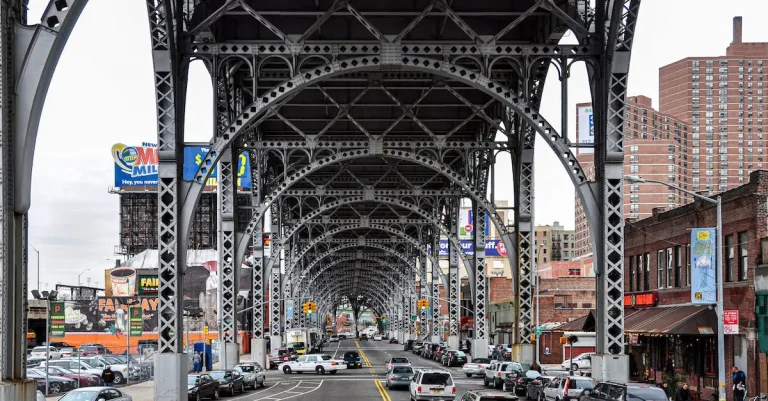Why Is Seattle So Expensive? Examining The High Cost Of Living
With its thriving tech industry and bustling metro area, Seattle is consistently ranked among the most expensive U.S. cities to live in. If you’re short on time, here’s a quick answer: Seattle’s high costs stem from its strong job market, high salaries, and geographic constraints limiting housing supply even as demand rises.
In this comprehensive guide, we’ll take an in-depth look at the key factors that make Seattle so costly, from housing and transportation to food and utilities. We’ll compare Seattle to other major metro areas, see how costs have risen over time, and explore the impact on residents at different income levels. We’ll also overview strategies and tips for saving money and getting by in pricey Seattle.
Housing Costs
One of the primary reasons for the high cost of living in Seattle is the exorbitant housing costs. The limited housing stock in the city is a major contributing factor. Seattle is a geographically constrained city, surrounded by water and mountains, which limits the amount of available land for development.
As a result, there is a shortage of housing supply relative to the demand, driving up prices.
Limited Housing Stock
The limited housing stock in Seattle has created a highly competitive real estate market. With a growing population and a booming economy, the demand for housing has skyrocketed. As a result, home prices and rental rates have significantly increased over the years.
According to a report by Zillow, the median home value in Seattle is well above the national average, making it difficult for many residents to afford a home.
Increasing Tech Salaries
Another factor contributing to the high cost of living in Seattle is the increasing tech salaries in the area. The city is home to several major tech companies, including Amazon and Microsoft, which offer highly competitive salaries and attract top talent from around the country.
The influx of well-paid tech workers has driven up the demand for housing, further exacerbating the housing shortage and increasing prices.
Out-of-State Transplants
Seattle has also seen a significant influx of out-of-state transplants in recent years. Many people are drawn to the city’s thriving job market, natural beauty, and vibrant culture. However, the influx of new residents has put additional strain on the housing market, as the demand for housing continues to outpace supply.
This has resulted in increased competition for housing and higher prices for both renting and purchasing homes.
Transportation Expenses
One of the factors contributing to the high cost of living in Seattle is transportation expenses. The city’s robust public transit system offers convenience and accessibility, but it comes at a price.
Public Transit Costs
Seattle’s public transit system, known as King County Metro, provides an extensive network of buses, light rail, and ferries. While public transit can be a cost-effective way to get around the city, fares have been increasing steadily in recent years.
The cost of a single ride on a bus or light rail can range from $2.75 to $3.25, depending on the distance traveled. Monthly passes are also available, but they can be quite expensive, especially for those who rely on public transit for their daily commute.
In addition to the fare costs, there may be additional expenses associated with using public transit, such as parking fees at transit stations or the need to purchase a separate pass for the ferry system.
Gas Prices
Another transportation expense that contributes to the high cost of living in Seattle is gas prices. According to AAA, the average price of regular unleaded gasoline in Seattle is often higher than the national average. This can make owning and operating a car more expensive for residents.
The higher gas prices can be attributed to various factors, including state and local taxes, transportation infrastructure costs, and regional supply and demand dynamics.
Ride Shares and Parking
Many Seattle residents rely on ride-sharing services like Uber and Lyft for their transportation needs. While these services offer convenience, they can also add up in terms of expenses. The cost of using a ride-sharing service can vary depending on factors such as distance, time of day, and demand.
Additionally, parking in Seattle can be costly, especially in downtown areas or popular neighborhoods. Monthly parking fees can range from $150 to $300, adding to the overall transportation expenses for residents.
High Cost of Goods and Services
Seattle is renowned for its high cost of living, and one of the contributing factors is the high cost of goods and services. Let’s take a closer look at three key areas that significantly impact the cost of living in the city.
Grocery Prices
When it comes to grocery shopping, Seattle residents often find themselves paying a premium compared to other cities. The higher cost of living in the area, along with factors such as transportation costs and local taxes, can contribute to the increased prices at grocery stores.
According to a study conducted by the Bureau of Labor Statistics, the average cost of groceries in Seattle is approximately 20% higher than the national average.
Despite the higher prices, Seattle residents are fortunate to have access to a wide variety of fresh and locally sourced products. The city’s commitment to sustainability and organic farming has led to an abundance of farmers’ markets and specialty stores, offering a unique shopping experience for those willing to invest a little more in their groceries.
Child Care Tuition
Childcare is another area where Seattle residents face high costs. The demand for quality childcare services in the city has led to increased tuition rates. According to a report by Child Care Aware of Washington, the average annual cost of full-time infant care in Seattle is over $16,000, making it one of the most expensive cities in the country for childcare.
The high cost of childcare often places a significant financial burden on families, especially those with multiple children. Many parents in Seattle have to make difficult choices when it comes to their careers and childcare options, as the cost can eat into a substantial portion of their income.
Entertainment and Dining Out
Seattle’s vibrant cultural scene offers a plethora of entertainment options, from theaters and museums to music venues and sporting events. However, enjoying these activities often comes with a hefty price tag.
The cost of tickets for concerts, shows, and other events can be considerably higher than in other cities.
Dining out is another area where Seattle residents may experience sticker shock. The city is known for its burgeoning food scene, with a wide range of restaurants offering diverse cuisines. However, the cost of dining out can be quite high, particularly in trendy neighborhoods such as Capitol Hill and Ballard.
Despite the high cost of entertainment and dining out, Seattle residents are willing to pay for the experience. The city’s culinary offerings and cultural attractions are highly regarded, making them popular destinations for locals and tourists alike.
Utility and Healthcare Costs
When it comes to the high cost of living in Seattle, utility and healthcare costs play a significant role. Let’s take a closer look at these expenses and why they contribute to the overall expense of living in the city.
Electricity and Heating
Seattle’s relatively high electricity and heating costs can be attributed to several factors. Firstly, the city’s cooler climate means residents often rely on heating systems for a significant portion of the year.
Additionally, the cost of electricity in Seattle is influenced by the region’s reliance on renewable energy sources, such as hydroelectric power, which can be more expensive to produce. According to the U.S. Energy Information Administration, the average residential electricity price in Seattle is higher than the national average.
To minimize these costs, residents can consider energy-efficient appliances, insulation, and strategic thermostat usage.
Internet and Cell Phone Service
Seattle residents also face higher internet and cell phone service costs compared to other cities. The increasing demand for high-speed internet and the need for reliable cell phone coverage contribute to these expenses.
Additionally, the limited competition among internet and cell phone service providers in the area may result in higher prices for consumers. However, residents can explore different service plans and providers to find the best options that suit their needs and budget.
Medical Care and Insurance
Medical care and insurance costs are major contributors to the overall high cost of living in Seattle. The city is home to world-class healthcare facilities and providers, which often come with higher price tags.
Additionally, the cost of health insurance premiums can be higher due to the overall cost of healthcare in the region. It is crucial for residents to carefully review their healthcare options and consider factors such as coverage, deductibles, and out-of-pocket expenses.
Exploring different insurance providers and plans can help individuals find more affordable options that still meet their healthcare needs.
For more information about utility costs and how to save on healthcare expenses, you can visit websites such as Seattle City Light and Washington Health Benefit Exchange. These resources provide valuable information and resources to help residents navigate the costs associated with utilities and healthcare in Seattle.
How Costs Impact Different Income Levels
Seattle’s high cost of living affects residents across various income levels. Let’s take a closer look at how these costs impact different segments of the population:
Low-Income Households
For low-income households, the high cost of living in Seattle can be particularly challenging. Housing expenses, such as rent or mortgage payments, tend to consume a significant portion of their monthly income. According to a study conducted by the U.S.
Department of Housing and Urban Development, low-income households in Seattle spend an average of 40% of their income on housing.
In addition to housing costs, other essential expenses like healthcare, transportation, and groceries can place a strain on the budgets of low-income individuals and families. As a result, they may have to make difficult choices and prioritize their spending, which can impact their overall quality of life.
Middle-Class Families
The middle-class families in Seattle also face the challenges of the city’s high cost of living. While their income may be higher than that of low-income households, they still feel the impact of increasing expenses.
Housing costs continue to be a significant concern for middle-class families, with rising home prices and rental rates. According to the Seattle Times, the average rent for a one-bedroom apartment in Seattle increased by X% in the past year.
Additionally, middle-class families often face the pressures of saving for retirement, college education, and other long-term financial goals. Balancing these expenses with the overall cost of living can be a juggling act, requiring careful budgeting and financial planning.
Upper-Class Residents
While upper-class residents may have higher incomes, they are not immune to the high cost of living in Seattle. They too experience the impact of steep housing prices and other rising expenses.
However, upper-class residents often have more financial resources to draw upon, allowing them to afford the higher costs. They may have greater access to investment opportunities, tax benefits, and other wealth-building strategies that help offset the impact of the city’s expensive lifestyle.
Nevertheless, even for the upper-class, the high cost of living can still impact their overall financial planning and discretionary spending. They must make informed decisions to balance their expenses and ensure their financial well-being in the face of Seattle’s expensive environment.
Conclusion
With its booming economy and constrained housing supply, Seattle continues to see rising costs that make it a challenge, especially for lower-income residents. By understanding the key factors like housing, transportation, utilities, and more that make Seattle so expensive, individuals and policymakers can make informed decisions. While the city remains costly, strategic budgeting, finding subsidies, and prioritizing affordability can help make living in Seattle possible at many income levels.








